
The Socialist Manifesto: The Case for Radical Politics in an Era of Extreme Inequality
by
Bhaskar Sunkara
Published 1 Feb 2019
The agreement doesn’t only apply to your factory, or even Koenigsegg as a whole, but to much of the Swedish automotive sector. Even though Koenigsegg is struggling, other manufacturers are doing well, buoyed by export sales and favorable market conditions. The national trade union federation takes an aggressive stance, basing its demands on the wages of a more efficient car manufacturer, Volvo. Equal pay for equal work is the federation’s principle. Saab and other, even more efficient companies than Volvo are easily able to pay the new wages and use the remaining profits to expand, but the increased labor costs spell disaster for Koenigsegg. You thought you were getting a raise; instead you can’t sleep at night.
…
They shared the SAP’s desire to promote and influence economic expansion but advocated doing so through centralized labor bargaining rather than direct state intervention. The starting point for the Rehn-Meidner strategy was a commitment to using that sectoral bargaining between the LO and the SAF to help equalize pay levels for all workers. That didn’t mean everyone earned the same, but the gap between higher and lower paid workers was reduced. The “equal pay for equal work” principle also meant that differentiated wages should be determined by the type of work performed, not by a particular employer’s ability to pay or an employee’s power on their shop floor.11 This was done for three reasons. First, because of an ideological commitment to equality: even if wages can’t be equal, at the very least we should lift up the incomes of the worst off and limit the advantages of the best.
…
Socialists, in general, favored universal suffrage, employment, and other civil rights, but were less proactive in other struggles and were suspicious of cross-class feminist causes.23 Sweden showed just how much sexual oppression could be diminished within capitalism. Child allowances, family leave, child care, even the provision of school meals—all eased the burdens placed on women. Beyond such legislation, “equal pay for equal work” and industry-level bargaining that favored the lowest-paid sectors disproportionately helped women. Still, as late as 1966, two-thirds of Swedish women stayed at home. A popular 1961 pamphlet pointed out that now women had the right to compete with men in the labor market but also had to maintain their household duties, making it difficult to do both in practice.24 Amid debate over this question, the state took steps to facilitate women’s labor force participation.

Remote: Office Not Required
by
Jason Fried
and
David Heinemeier Hansson
Published 29 Oct 2013
These days few companies offer remote work (though, of course, the point of this book is that remote work is on the rise), and even fewer do so with equal pay for equal work across geographies. The ones that do are at an almost unfair advantage in attracting and keeping the best people in the world. So don’t look at remote work as a way to skimp on salaries; you’ll save on lots of other things. Your star designer out in the sticks is just as valuable (maybe more so) to the team as those working from the big-city home office. Make sure she feels that way. By the same token, as a remote worker, you shouldn’t let employers get away with paying you less just because you live in a cheaper city. “Equal pay for equal work” might be a dusty slogan, but it works for a reason.
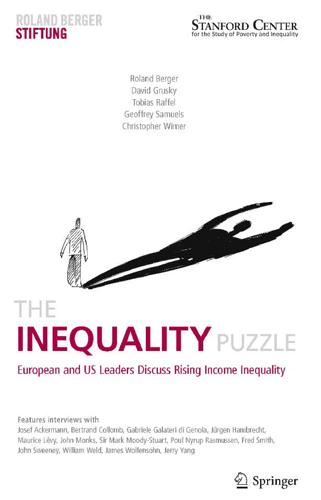
The Inequality Puzzle: European and US Leaders Discuss Rising Income Inequality
by
Roland Berger
,
David Grusky
,
Tobias Raffel
,
Geoffrey Samuels
and
Chris Wimer
Published 29 Oct 2010
When the Polish worker goes to Britain, it’s not because he loves to go to Britain, it’s because he needs to go there for higher earnings, to go back home to buy his house, help his wife, his kids. I’m not saying it’s wrong, I’m only saying how do we do it in a better way to ensure we achieve equal pay for equal work and full respect for collective bargaining agreements. What we need in legislation is the so-called equal pay principle, that no matter where you are, you receive adequate wages, have access to social insurance, pensions, and can benefit from high workers’ protection standards. So when Polish workers go to Germany, they are treated according to the German rules and when German workers go to Denmark, they enjoy Danish standards.
…
We have to avoid the kind of situation where- 98 P.N. Rasmussen by an employer sends his own team of employees to another member country, to do a job for a certain period of time, but only pays the minimum salary of the country these workers come from and therefore undermines the right of equal pay for equal work. Such behavior not only exploits these posted workers, it also puts pressure on salaries and working conditions in the countries the employees are sent to. The posted workers directive has been interpreted by the European Court of Justice to allow such abuse and therefore it needs to be revised.
…
Other Suggestions to Strengthen the Disadvantaged Monks, Sweeney, and Rasmussen suggest measures to enhance labor’s ability to negotiate for higher wages. Sweeney calls for passage of the Employee Free Choice Act to give American workers organizing rights widely recognized in Europe, while Rasmussen supports measures to encourage EU labor mobility, notably “equal pay for equal work” when companies hire foreign workers. Jürgen Hambrecht would like to see more EU commitment for the Lisbon Strategy, especially measures to promote innovation and a learning economy. Rasmussen concurs and suggests expanding the brief and use of European-wide funding to promote job creation.

Secrets of the Sprakkar
by
Eliza Reid
Published 15 Jul 2021
Only 13 percent of CEOs in the country’s top eight hundred companies are women.25 In Iceland’s corporate world, there is increasingly urgent hand-wringing on the lack of gender parity in the boardroom and the corner office. Legislation that mandates a gender balance on boards as well as laws on equal pay for equal work have helped to hasten the process. Men generally seem to be in agreement with the concept and recognize overall that increased gender and ethnic diversity increases the bottom line.*26 Vocal role models ensure the issue remains in the minds of decision makers. But the money—the companies on the stock exchange, investors such as powerful pension funds—remains firmly in the hands of men.
…
In 2013, Iceland’s parliament passed legislation that required the boards of companies with more than fifty employees, such as Marel, to have a gender ratio of at least 60/40. In 2017, Iceland again made global headlines when it became the first country in the world to make it illegal for companies to pay men more than women (equal pay for equal work).* Marel acquired the certification that they were an equal pay employer in 2019.27 “I am sure we would not have had the equality on the boards if it were not law,” asserted Gudbjörg, the first woman to be responsible for one of the brand’s global P&L (profit and loss) accounts. An engineer by training, she was the company’s head of the Iceland office until March 2020, when she took on her new responsibilities.
…
The potential fines for not complying to those rules are immense [up to 4 percent of total revenue], and as a result, this has become a business priority. “In the ten years or so since the law was introduced, we are still far from achieving equality,” she continued. “This makes me really mad. Things are still moving too slowly.” She said this also applies to the newer law on equal pay for equal work. Ragnhildur’s peer Gudbjörg had been working at Marel for several years before she was tapped to run the Iceland office, and she didn’t feel she was treated any differently in that role because of her gender. On the other hand, after her appointment to the global executive team, an opportunity she described as “a dream come true,” she said some of her new sales team were skeptical about being led by a woman.
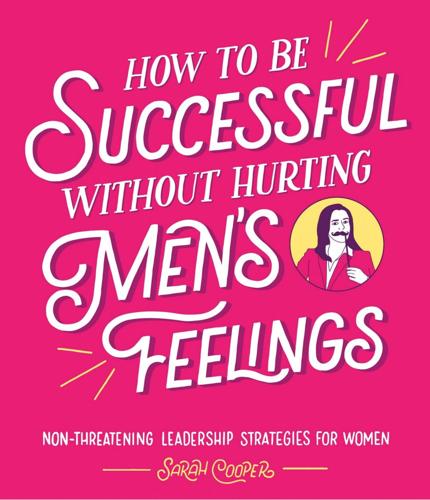
How to Be Successful Without Hurting Men’s Feelings: Non-Threatening Leadership Strategies for Women
by
Sarah Cooper
Published 1 Nov 2018
Sentiment When it comes to diversity, perception is as important as reality. As such, it is very heartening to us that most people feel like our problems with diversity have been largely solved. Salaries It’s important that each one of our employees receives equal pay for equal work and that commitment is reflected in the wide representation of salaries across our company. Inclusion Our employees enjoy a range of team-building activities to enrich our diverse culture. Sexism Sexism in the technology industry is a huge problem, but it is encouraging to see that the vast majority of people don’t experience it in their day-to-day lives.

The Economics Anti-Textbook: A Critical Thinker's Guide to Microeconomics
by
Rod Hill
and
Anthony Myatt
Published 15 Mar 2010
Discrimination All the mainstream textbooks at least mention discrimination; but there is no consensus on how it is treated. The central story is this: over time a competitive market economy will automatically eliminate discrimination (wage differences not based on differences in productivity), provided the forces of competition are not short-circuited by equal pay for equal work legislation. To see this, suppose black and white workers have identical skills and work ethic, but some firms will employ black workers only if the wage is low enough to overcome their dislike of them. If there are not enough non-discriminating firms, some black workers must accept a lower wage at discriminating firms.
…
To maximize profits, the monopsonist hires labour until its marginal cost equals its marginal revenue product at point 175 8 | Marginal productivity theory wage structure persists, then logic dictates that the low wage group is not in fact equally capable. Perhaps they lack education, skills or good work habits. Another possibility is that competitive pressures are being frustrated by equal pay for equal work legislation. This prevents non-discriminating employers from paying lower wages, and so prevents them from reaping more profits and expanding their market share. Prejudiced firms will continue to employ white workers whenever possible without being punished by market forces. The better textbooks point out that competition doesn’t automatically eradicate discrimination when customers are themselves prejudiced and willing to pay more to be served by white workers.
…
G., 34 Dewey, John, 114 differences, principle of compensating, 172 298 Easterlin, Richard, 74, 87–91 Easterlin Paradox, 89–91 Eatwell, John, 166 ecological crisis, 253–4 econometrics, 34, 35–6 economic justice, 5 economics: as art of rhetoric, 32, 36–40, 246; as battleground, 3; as positive science, 3; as science of choice, 9–10, 11; as social science, 14; as value-free science, 1; behavioural, 23–5; definition of, 3, 9–26; diversity of, 7 see also neoclassical economics and normative economics and positive economics economies of scale, 138 efficiency, 5, 10, 27, 69, 92, 135–8, 167, 169, 196, 197, 243, 245–6; costs of taxation, 204, 210; dynamic, 132–5, 210; effect of inequality on, 20–1, 210; of asset markets, 145–9; of market, 18, 118–49; of perfect competition, 121–2, 137; static, 132–5, 210; trade-off with equity, 20–1 see also inefficiency efficiency wage, 58, 174; model, 184, 185 efficient market hypothesis (EMH), 145–6 Einstein, Albert, 3, 27 Eisenhower, Dwight D., 19 enabling myths, 71 Engels, Friedrich, The Condition of the Working Class in England, 161 Enron, 143, 193, 260; collapse of, 70, 114 entrepreneur, attention of, 98 entrepreneurship, as factor of production, 170 environmental movements, 160 equal net benefit, principle of, 172 equal pay for equal work, 174, 175 equilibrium, 67, 121, 134, 142, 181; general, 72; in markets, 64–5; multiple equilibria, 66–8, 72, 181–2; of the firm, 101, 107–8; partial, 72; return to, 73; short and long-run, 119–21, 127–8, 178, 180 equilibrium theory, 182 equity, 16, 131–2, 169, 179, , 196–218, 243, 245–6; cost of monopoly, 124; health, 216–17; role of governments in, 13–14; trade-off with efficiency, 20–1 see also fairness equity–efficiency trade-off, reconsidered, 208–13 equity–growth trade-off: evidence about, 210–11; persistence of notion of, 212–13 ethical values, 17 European Union, 162 eviction protection legislation, 70–1 evidence: need for, 6; selective use of, 4, 246–7 exchange rates, 44 executive compensation, 179, 190–4; trends in, 191–4 experience-goods, 141–2, 250 externalities, 7, 22, 135, 145, 150–68, 196, 204, 217, 224, 241, 250, 254, 256; analysis of, 154–66; and market economy, 167–8; and profit motive, 166–7; consumption externalities, 151, 157–9; in finance industry, 166; missing from textbook accounts, 231–3; problem of, 6; role of, 257–8; systemic, 258 Exxon-Mobil, 156 factors of production, 227; demands for, 170–2 failure of markets, 141, 232 fair trade, 233–4 fairness, 202, 184–5, 189; importance of, 185–6; of distribution, 179–80 false beliefs, choosing of, 162–3 falsificationism, 36 Federal Deposit Insurance Corporation, 257 Federal Housing Administration Act (1934) (USA), 259 Federal National Mortgage Association (Fannie Mae), 259, 261 299 Index diminishing marginal returns, 102–3; law of, 94–5, 104, 170, 213 distribution and redistribution of income, 5–6, 14, 16, 77, 131–2, 165–95, 196–218, 251; functional, 177; measurement of, 198–200 distribution of wealth, 200–1 diversification of production, 223 division of labour, 94 Dixon, Huw, 107, 108 Dow AgroSciences, suing of Quebec, 237 Dowd, D., 248 Driskill, Robert, 225, 226, 241 Feldstein, Martin, 205, 207 Fields, W.
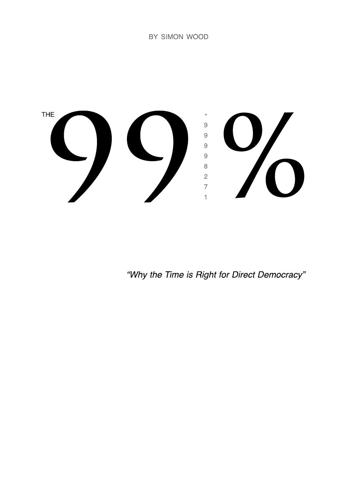
The 99.998271%
by
Simon Wood
Published 23 Apr 2012
Everyone, as a member of society, has the right to social security and is entitled to realization, through national effort and international co-operation and in accordance with the organization and resources of each State, of the economic, social and cultural rights indispensable for his dignity and the free development of his personality. 70 ARTICLE 23. (1) Everyone has the right to work, to free choice of employment, to just and favourable conditions of work and to protection against unemployment. (2) Everyone, without any discrimination, has the right to equal pay for equal work. (3) Everyone who works has the right to just and favourable remuneration ensuring for himself and his family an existence worthy of human dignity, and supplemented, if necessary, by other means of social protection. (4) Everyone has the right to form and to join trade unions for the protection of his interests.
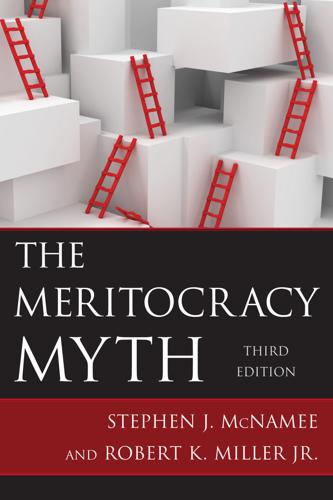
The Meritocracy Myth
by
Stephen J. McNamee
Published 17 Jul 2013
Even among recent college graduates working in the same field, men typically earn more than women (Corbett and Hill 2012). While pay gaps have narrowed and discrimination has been reduced, efforts to eliminate employment discrimination against women have not been entirely successful. The federal Equal Pay Act of 1963, which mandates equal pay for equal work, applies to a relatively small proportion of female workers: those who perform the same job as male workers for the same employer. Although these women’s wages have increased as a result of the Equal Pay Act, as we noted above, many women remain segregated in a small set of occupations in which few or no men work.
…
The 1964 Civil Rights Act and its enforcement arm, the Equal Employment Opportunity Commission, address cases of sex discrimination. But neither this nor subsequent federal legislation has removed all employment discrimination against women. Since men and women tend to do different kinds of work, the call for “equal pay for equal work” did not fully address pay equity issues for women. During the 1980s, pay equity, or comparable worth, was proposed as a means to address the tendency for the paid work that women perform in the labor force to be undervalued. Comparable worth calls for equal pay for different types of work that are judged to be comparable in value by measuring such factors as employee knowledge, skills, effort, responsibility, and working conditions.

The Class Ceiling: Why It Pays to Be Privileged
by
Sam Friedman
and
Daniel Laurison
Published 28 Jan 2019
Specifically, we introduce our case studies – a national television broadcaster, a large multinational accountancy firm, an architecture practice and a set of self-employed actors. In each case we began our fieldwork by collecting and analysing data on the social make-up of the firm (or occupation). This, as we go on to explore, was highly revealing. In particular it indicates that in many elite settings the class pay gap is less an issue of equal pay for equal work and more about the horizontal segregation of the socially mobile into less prestigious departments or functions, and/or their vertical segregation into lower tiers or positions. 69 The Class Ceiling Figure 3.7: The drivers of the class pay gap – what advantages the privileged? terbet g in pations n i rk cu Wo id oc pa Working n in Londo Working bigger fi in rms Mo re p edu resti cat gio ion us ed u e or on M cati CLASS PAY GAP 70 FOUR Inside elite firms “Hear that?”
…
Understanding the nature of these organisations – what they look like, their structure, their demographic make-up – is key for contextualising the chapters that follow. These organisational x-rays are also highly revealing in their own right. They demonstrate that when it comes to the class pay gap, by far the most powerful issue is not equal pay for equal work. Instead, we find that the socially mobile very often face a class ceiling – they are less likely to enter the most high-paying 72 Inside elite firms departments and, even more significantly, rarely reach the top of the organisational structure. 6TV 6TV does not wear its visual identity lightly.

Strangers in Their Own Land: Anger and Mourning on the American Right
by
Arlie Russell Hochschild
Published 5 Sep 2016
Maybe I could also find the key to Lee’s own journey from left to right. For years, back when he worked in a naval shipyard outside Seattle, Washington, he had campaigned for Senator Scoop Jackson, a Cold War–era liberal Democrat who championed civil rights and human rights. Brought up by a working single mother who fought in the shipyards for equal pay for equal work, Lee describes himself as “an ERA baby.” When he came south for work in the 1960s, however, he turned Republican, and after 2009 he joined the Tea Party. We seat ourselves, pour our coffee, and I ask him to tell me about his childhood. Lee speaks slowly, deliberately, as if for posterity.
…
According to national polls, more men than women are Republican, or Tea Party, and more men (12 percent in 2012) are members or supporters of the Tea Party than women (9 percent). And even within these conservative groups, women are more likely than men to appreciate the government’s role in helping the disadvantaged, in making contraception available, in equal pay for equal work. It was this range of issues—especially the need for parental leave—that had led me, as I note in the preface, on this journey in the first place. The women I spoke to seemed to sense that if we chop away large parts of the government, women stand to lose far more than men, for women outnumber men as government workers and as beneficiaries.

Socialism Sucks: Two Economists Drink Their Way Through the Unfree World
by
Robert Lawson
and
Benjamin Powell
Published 29 Jul 2019
Rather than relaxed women enjoying sex thanks to socialism, as the New York Times describes, she found women who were worn out, often from working in physically demanding jobs while still trying to manage their homes and children. The Bolshevik government declared women’s emancipation and employment as one of its goals and passed laws to enforce equal pay for equal work. The reality, Gray found, was quite different. Women earned only about two-thirds of what men did, despite being better educated. Meanwhile, they performed demanding physical labor, the kind usually done by men in market economies. Ninety-eight percent of the janitors and street cleaners in the Soviet Union were women, as well as one-third of railroad workers, and more than two-thirds of highway construction crews and warehouse workers.21 Gray noted that while American feminists did not want to be “stuck at home” and were “striving for the right to work in coal mines, firefighting units, police brigades,” and other male-dominated occupations, Soviet women were put into these and other arduous jobs, and by the late 1980s, after seventy years of Communism, wanted to be freed from them.22 If anything, Soviet women in the 1980s were overworked, and they had a lower standard of living, worse health care, and far more limited options for contraception than women in capitalist countries.

Wealth and Poverty: A New Edition for the Twenty-First Century
by
George Gilder
Published 30 Apr 1981
Most of the differences in pay between men and women, though, derive from the fact that women between the ages of twenty-five and fifty-nine are eleven times more likely than men to voluntarily leave work, and the average woman spends only eight months on a job compared to almost three years for a man.1 Throughout the economy, moreover, men and women alike with college degrees and doctorates, technical fields included, often earn less than plumbers and garbage men and miners and truck drivers who have high school credentials at best. Everyone seems to want indoor work with no heavy lifting, but only women nearly always get it, thus driving down their pay. Equal pay for equal work is a principle that applies nowhere, even among men. Even in identical jobs, work effort varies vastly from worker to worker. What the EEOC implicitly demands is carte blanche powers over the entire job market and thus the destruction of the vital freedom of workers to choose their own jobs from among the competing offers of employers.2 An equal rights effort—even an affirmative action program—was feasible when concentrated on the 10 percent of the American people with real grievances.
…
See Great Britain entrepreneurial accelerator entrepreneurs and entrepreneurship adverse conditions and spirit of central role of, in capitalism class and giving impulse in capitalism and ideal of perfect competition and inexhaustibility of inheritance and job creation by Keynes’ view of politicians and risk-taking and taxation and entropy environmental movement Environmental Protection Agency (EPA) EPA. See Environmental Protection Agency equal economic opportunity Equal Employment Opportunity Commission (EEOC) equal pay for equal work equal rights agencies Estonia Europe Evans, Michael exports extension services Facebook The Failure of Capitalism (Richard A. Posner) Fairchild Faith false abstraction family biological differences in disruption of extended female-headed integration and poverty and two-income Family Assistance Plan Fannie Mae Fanon, Frantz FDA.

The Narcissistic Family: Diagnosis and Treatment
by
Stephanie Donaldson-Pressman
and
Robert M. Pressman
Published 31 Jan 1994
Lack of Entitlement The locus of difficulty, on which boundary setting, intimacy concerns, and virtually every other survivor issue is centered, has to do with emotional entitlement. In order to set boundaries with another person (whether it means saying no to sex, refusing to take an adolescent to the convenience store late at night to pick up a notebook for school because he "forgot" to ask earlier, or insisting on equal pay for equal work), one must know that one has the right to feel as one does: that one has the right to set the boundary, feel the feeling, or make the demand. In narcissistic families, be they covert or overt, the children are not entitled to have, express, or experience feelings that are unacceptable to the parents.

Why Women Have Better Sex Under Socialism: And Other Arguments for Economic Independence
by
Kristen R. Ghodsee
Published 20 Nov 2018
An acute crisis of overproduction and underconsumption looms on the horizon.15 The expansion of public services would support women in a second way. A wider social safety net means that women’s lower private sector wages don’t disadvantage them in terms of access to health care, clean water, child care, education, or security in old age. Rather than trying to legislate equality or coerce private companies into providing equal pay for equal work and giving women equal opportunities for promotion, women could join together to choose leaders who will lessen the social costs of gender discrimination through public policy. Another idea is some form of guaranteed employment like what they had in the state socialist countries. This is an old economic concept to prevent the human suffering caused during economic downturns.

Logically Fallacious: The Ultimate Collection of Over 300 Logical Fallacies (Academic Edition)
by
Bo Bennett
Published 29 May 2017
Ad Hominem (Guilt by Association) argumentum ad hominem (also known as: association fallacy, bad company fallacy, company that you keep fallacy, they’re not like us fallacy, transfer fallacy) Description: When the source is viewed negatively because of its association with another person or group who is already viewed negatively. Logical Form: Person 1 states that Y is true. Person 2 also states that Y is true, and person 2 is a moron. Therefore, person 1 must be a moron too. Example #1: Delores is a big supporter for equal pay for equal work. This is the same policy that all those extreme feminist groups support. Extremists like Delores should not be taken seriously – at least politically. Explanation: Making the assumption that Delores is an extreme feminist simply because she supports a policy that virtually every man and woman also support, is fallacious.

The Relentless Revolution: A History of Capitalism
by
Joyce Appleby
Published 22 Dec 2009
It reached out to skilled and unskilled workers, blacks, and women as well as the mainstream white male laborer. The only groups officially excluded were doctors, bankers, lawyers, producers of liquor, and gamblers. Its agenda included an eight-hour workday, prohibition of child labor, a graduated income tax, nationalizing of public utilities and railroads, equal pay for equal work, and the establishment of cooperatives to offer an alternative to manufacturing with wage labor. Although it originally eschewed strikes, the Knights got involved in the Haymarket Square riot, which pretty much ended its upward trajectory. This ugly incident began when someone among the Chicago marchers threw a bomb toward the police.
…
When Sandra Day O’Connor, the first female member of the Supreme Court, left Stanford Law School, the only job offered her was as secretary in a law firm. She had graduated second in her class. (Supreme Court Chief Justice William Rehnquist was the first.) Once women moved into the professions in large numbers in the 1960s, clerical salaries went up. Soon there was a full-blown movement to secure “equal pay for equal work,” a term that originated in the labor movement in the 1930s but came to refer exclusively to pay discrimination against women. In 1963 President John Kennedy signed into law the Equal Pay Act, and the venerable gap between male and female salaries began to close. Since then it has narrowed from fifty-nine cents to every dollar earned by men to seventy-seven cents.

Hit Refresh: The Quest to Rediscover Microsoft's Soul and Imagine a Better Future for Everyone
by
Satya Nadella
,
Greg Shaw
and
Jill Tracie Nichols
Published 25 Sep 2017
I encouraged them to watch the video, and I was quick to point out that I had answered the question completely wrong. “Without a doubt I wholeheartedly support programs at Microsoft and in the industry that bring more women into technology and close the pay gap. I believe men and women should get equal pay for equal work. And when it comes to career advice on getting a raise when you think it’s deserved, Maria’s advice was the right advice. If you think you deserve a raise, you should just ask.” A few days later, in my regular all-employee Q&A, I apologized, and explained that I had received this advice from my mentors and had followed it.

Move Fast and Break Things: How Facebook, Google, and Amazon Cornered Culture and Undermined Democracy
by
Jonathan Taplin
Published 17 Apr 2017
In the midst of this stew of anger and self-pity he came to the conclusion that his plight was all the fault of the women’s movement. So he set out to write a book called Sexual Suicide, which would wake the country up to the poison in its midst. A review of the book in Kirkus Reviews states his theme: Women’s Lib and its goals—abortion on demand, child-care centers, equal pay for equal work—will be the ruination of us all. Anything that takes the woman out of the home will add to the male sense of redundancy, impotence and rootlessness; take away his age-old role as protector and provider and he will turn to drugs, pornography, marauding, rape and killing. To Gilder it was simple.

Embracing Your Inner Critic: Turning Self-Criticism Into a Creative Asset
by
Hal Stone
Published 5 Mar 1993
Traditionally in our society, a woman was considered the property of her husband (or her father or her brother) and was not allowed to own property or in any way to act independently. It was only in this century that women were granted the right to vote. In America, we still cannot pass an equal rights amendment that would entitle women to little more than equal pay for equal work. The Inner Patriarch is a powerful archetypal ally of the Inner Critic in women. The synergy of these two voices makes the average woman’s Inner Critic more powerful than the average man’s. The voice of the Inner Patriarch is so familiar that, much like station KRAZY, it played constantly and was not even noticed until the feminists started their writings about thirty years ago.

Revolution at Point Zero: Housework, Reproduction, and Feminist Struggle
by
Silvia Federici
Published 4 Oct 2012
It seems to me now, more than ever, that if the women’s movement is to regain its momentum and not be reduced to another pillar of a hierarchical system, it must confront the material condition of women’s lives. Today our choices are more defined because we can measure what we have achieved and see more clearly the limits and possibilities of the strategies adopted in the past. For example, can we still campaign for “equal pay for equal work” when wage differentials are being introduced even in what have traditionally been the strongholds of male working class power? Or can we afford to be confused as to “who is the enemy,” when the attack on male workers, by technological unemployment and wage cuts, is used to contain our demands as well?

We're Going to Need More Wine: Stories That Are Funny, Complicated, and True
by
Gabrielle Union
Published 16 Oct 2017
Younger women are literally dangled in front of their older peers as a you-better-act-right stick to keep older, more experienced women in line. Because we’ve all seen a pal replaced for a younger, cheaper model with lower expectations and more free time for overtime or courting clients. Modern business is set up to squeeze out women who “want it all”—which is mostly just code for demanding equal pay for equal work. But the more empowered women in the workforce, the better. The more that women mentor women, the stronger our answer is to the old-boys’ network that we’ve been left out of. We can’t afford to leave any woman behind. We need every woman on the front lines lifting each other up . . . for the good of all of us and the women who come behind us.
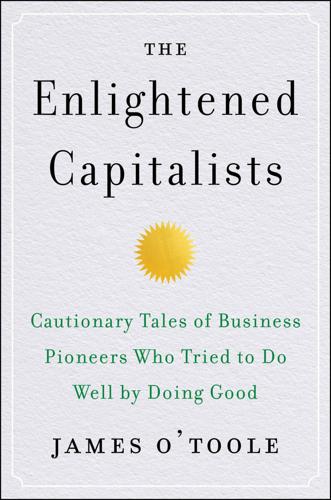
The Enlightened Capitalists
by
James O'Toole
Published 29 Dec 2018
As the company grew ever more profitable, Lever reduced the workday from eight to six hours—while paternalistically introducing two hours of compulsory education. Perhaps Lever’s most radical, and farsighted, employment practice was gender equality. The women who constituted a high percentage of his workforce were given equal pay for equal work and promoted to management alongside men. They also were provided with safe and sanitary working conditions, and secure separate housing was available for unmarried women. As early as 1903, Lever was a vocal supporter of women’s suffrage, and thirteen years later—a dozen years before all British women over twenty-one were enfranchised—he was publicly backing the cause, saying “The old idea of woman has to go . . . and it can only be done if she receives an equal education in every way and an equal equipment with man.”12 Then there was the dancing!
…
Eagan explicitly directed the board to use dividends from his shares in three ways: as profit sharing; as income to workers if the plant shut down for any reason; and as support to the widows and children of deceased workers.48 In ACIPCO’s constitution Eagan articulated the company’s basic ethical values and principles—honesty, justice, a square deal, and “doing right,” illustrating each with a practical example (such as equal pay for equal work for black employees). Those who knew Eagan well recalled that his prime interest in writing the constitution was to ensure the future character development of the company’s workforce.49 His intention to use the workplace as the locus of human development thus parallels the efforts of Owen, Penney, and Lever.
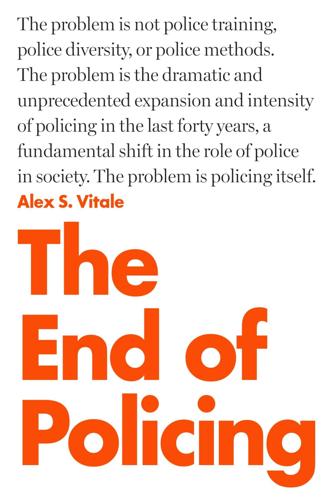
The End of Policing
by
Alex S. Vitale
Published 9 Oct 2017
While commercial sex work will always have harm attached to it, so do legal sweatshops. In fact, the subordinate position of women in our economy and culture is the real harm left unaddressed by prohibition. Despite the lofty goals of abolitionists, as long as they are denied equal economic and political rights and equal pay for equal work, women will be forced into marginal forms of employment. As long as women and LGBTQ people are poor, socially isolated, and lack social and political power; as long as runaway and “throw away” kids have no place to turn but the streets, they will be at risk of trafficking and coercion. Neither the police nor the “rescuers” seem keen to address these social and economic realities.

Affluence Without Abundance: The Disappearing World of the Bushmen
by
James Suzman
Published 10 Jul 2017
There are no obvious analogues among other peoples for what happened in Nyae Nyae, where—following the recruitment of almost every able-bodied male Ju/’hoan between the ages of eighteen and thirty-five into the South African army—in a little over than six months Tsumkwe went from being largely moneyless to being swamped with cash. By the time the first Ju/’hoan recruits donned their khaki military fatigues, South African military authorities had already accepted the principle of equal pay for equal work for all its recruits, although it would take several years before it was rolled out. Previously military pay was rationed according to race. White soldiers earned more than Indian and mixed-race soldiers of the same rank, who in turn earned more than black soldiers. But prosecuting an escalating war against an “enemy” that was fighting for racial equality, among other things, risked turning manpower the South Africans depended on into a mutinous liability and persuaded them that “de-racializing” military salaries was a priority.
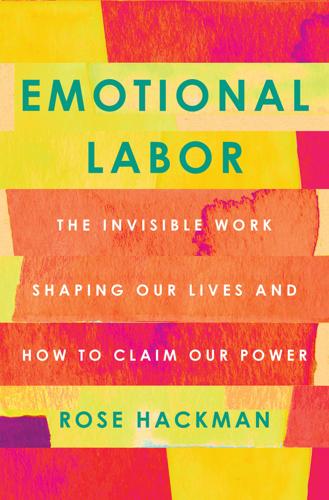
Emotional Labor: The Invisible Work Shaping Our Lives and How to Claim Our Power
by
Rose Hackman
Published 27 Mar 2023
Point 4 under Article 23, which in full includes other rights applicable/violated here: “(1) Everyone has the right to work, to free choice of employment, to just and favourable conditions of work and to protection against unemployment. “(2) Everyone, without any discrimination, has the right to equal pay for equal work. “(3) Everyone who works has the right to just and favourable remuneration ensuring for himself and his family an existence worthy of human dignity, and supplemented, if necessary, by other means of social protection. “(4) Everyone has the right to form and to join trade unions for the protection of his interests.”
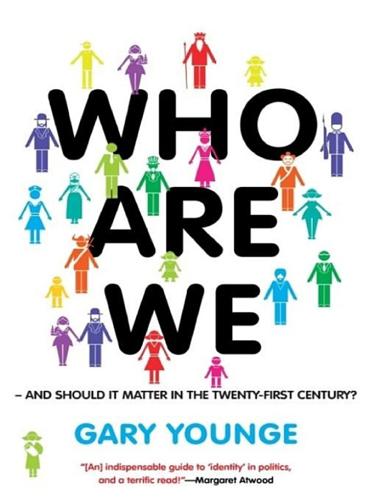
Who Are We—And Should It Matter in the 21st Century?
by
Gary Younge
Published 27 Jun 2011
It has managed to silence many who believe in progressive change by branding them as unworthy, pedantic and controlling. Many liberals will start sentences with “I’m not politically correct but ...” and then go on to make a compelling case for equality or cultural sensitivity, in the same way that many young women today say, “I’m not a feminist but ...” before arguing why women should get equal pay for equal work. In short, it has managed to stigmatize both civility and equality. In the end, the judicial committee voted 13–6 to confirm Sotomayor. Only one Republican, Lindsey Graham, voted for her. “This radical empathy standard stands in stark opposition to what most of us understand to be the proper role of the judiciary,” said Senator Chuck Grassley.
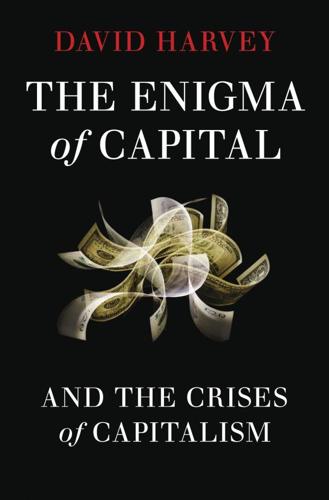
The Enigma of Capital: And the Crises of Capitalism
by
David Harvey
Published 1 Jan 2010
Indeed, in the US in the 1950s and 1960s, labour organisations sought to curb competition in labour markets by imposing exclusions based on race and gender. The ability to preserve such distinctions is illustrated by the fact that even after nearly a half century of campaigning for the principle of ‘equal pay for equal work’, the wage gap between men and women has not disappeared even in the United States where the pressures have probably been strongest. Elsewhere, for example in east Asia, the gender disparities are far worse and it is there, of course, that the bulk of the newly proletarianised populations are made up of women.
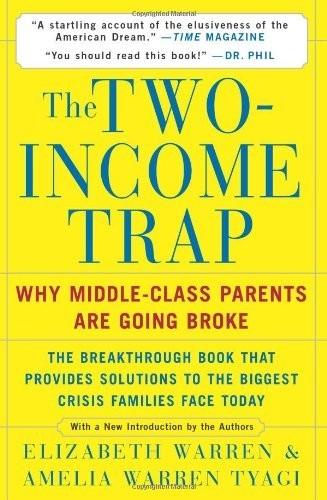
The Two-Income Trap: Why Middle-Class Parents Are Going Broke
by
Elizabeth Warren
and
Amelia Warren Tyagi
Published 17 Aug 2004
Women with children are more likely to lose their homes and more likely to be late on their bills. And single women with children are now three times more likely to go bankrupt than men without children.108 The notion that women should fight for economic reform is hardly new. From the early days of the struggle for “Equal Pay for Equal Work,” women’s groups have protested for financial justice. But the issue of economic reform for middle-class women is often shunted aside by other priorities. For example, the NOW Legal Defense and Education Fund vigorously opposed the credit industry-backed bankruptcy bill, doing the painstaking legwork to convince nearly thirty other women’s groups as disparate as Church Women United, Hadassah, and the YWCA to join the fight.109 Yet NOW Legal Defense also offered its very public support to Senator Joseph Biden, featuring him as women’s strongest ally in the Senate because he supported the Violence Against Women Act.110 Apparently, his support of this bill trumped any concerns the group might have had over the fact that Senator Biden is “the leading Democratic proponent” and “one of the . . . strongest supporters” of the very bankruptcy bill against which NOW Legal Defense had fought so hard.111 Women’s groups have too few dollars and too little (wo)man power to fight every injustice.
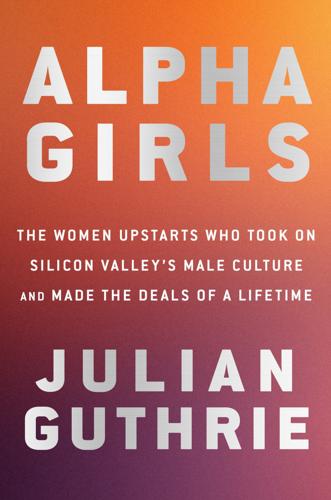
Alpha Girls: The Women Upstarts Who Took on Silicon Valley's Male Culture and Made the Deals of a Lifetime
by
Julian Guthrie
Published 15 Nov 2019
When she was punched in the eye that day in her office, she wanted to reply just as Spock had done when the Enterprise hit turbulence and tossed crew members around the cabin. Asked what had happened to him, Spock replied, “The occipital area of my head seems to have impacted with the arm of my chair.” At the same time, though, she drew the line on the topic of equal pay for equal work. Not long after the off-site meeting in Monterey, Magdalena, who had been working under the title of “venture partner,” was invited to become a “general partner,” which gave her more authority, responsibility, and “carry,” or “incentive allocation” based on profits. General partners shared in the upside of profits on investments.

Going Solo: The Extraordinary Rise and Surprising Appeal of Living Alone
by
Eric Klinenberg
Published 1 Jan 2012
From an economic perspective, the cause of the change looks obvious. Today more women have received advanced education and established themselves in successful careers than ever before. In 1970, for instance, 36 percent of all college graduates were women, compared to 54 percent today. Women’s income still lags behind men’s, and there’s not yet equal pay for equal work, but the pay gap is narrowing. In the 1970s, the median income of full-time female workers was about 52 percent of what full-time male workers earned. By 2007, it was up to 71 percent. Single women have made even greater gains, particularly compared to single men. According to the Pew Research Center, “Among U.S.

Unequal Britain: Equalities in Britain Since 1945
by
Pat Thane
Published 18 Apr 2010
The government’s change came about, probably, because the Conservatives were anxious to hold the votes of middle class women, whom they had attracted in large numbers in the 1951 election.11 Also, there was a shortage of recruits to a number of traditionally female public sector jobs, such as teaching, due both to the expansion of education services and of the public sector generally after the war, and to the early retirement from full-time work of younger women due to marriage and childbirth. There were also international influences. The United Nations Commission on the Status of Women adopted a resolution in 1948 calling upon the International Labour Organisation (ILO) to take action on the issue of equal pay for equal work. Three years later, this principle was enshrined in Convention 100 of the ILO. Throughout the late 1950s and 1960s, an array of groups, most with roots in the pre-war period, cooperated to keep the gender equality agenda alive. Two victories were won in the sphere of politics. The first came in 1958, when the Life Peers Act allowed the creation of both male and female life peers, admitting women to the House of Lords for the first time, for which there had been a campaign since women were admitted to the House of Commons in 1918.

Ghost Work: How to Stop Silicon Valley From Building a New Global Underclass
by
Mary L. Gray
and
Siddharth Suri
Published 6 May 2019
They are often trying to figure out who they are working with and whether those team members make more money than they do. The realities of LeadGenius’s pricing and its dependency on lowering prices through labor arbitrage mean that workers can be left feeling undervalued because they find out what other countries’ workers can earn doing the same work. The logic that one deserves equal pay for equal work is even tougher to refute in places where workers see little difference in the costs of living when they compare, say, India with the Philippines—as some of our interview participants did—making discrepancies in pay hard to accept. Add to this the persistent message of community and the value of teamwork and the importance of each person’s contribution, and it becomes hard for a company to quell the frustrations of workers who feel they are told they are equal but do not receive the same pay.

Priceless: The Myth of Fair Value (And How to Take Advantage of It)
by
William Poundstone
Published 1 Jan 2010
Overall, the male proposers in Solnick’s study made about 14 percent more money than female proposers did. That is close to reported figures for the gender gap in real-world wages. Salaries are negotiated, Solnick noted, and “women may end up with a smaller share of the portion of wages that is up for grabs.” These are disturbing findings for our would-be egalitarian society. “Equal pay for equal work” can be a tricky concept when individuals negotiate their salaries. What is to be done if employers, male and female, unconsciously quote lower salaries to women—and women accept them? Solnick has found that many employers are remarkably unconcerned. One common reaction to her research from employers is: “If women take our first offer, too bad for them.

Cynical Theories: How Activist Scholarship Made Everything About Race, Gender, and Identity―and Why This Harms Everybody
by
Helen Pluckrose
and
James A. Lindsay
Published 14 Jul 2020
As Pinker argues in Enlightenment Now, “The data show that more liberal countries are also, on average, better educated, more urban, less fecund, less inbred (with fewer marriages among cousins), more peaceful, more democratic, less corrupt, and less crime-and coup-ridden.”14 It is simply astonishing that over the same twenty year period (1960–1980) during which women gained access to contraception and equal pay for equal work, racial and sexual discrimination in employment and other areas became illegal, and homosexuality was decriminalized, the postmodernists emerged and declared that it was time to stop believing in liberalism, science, reason, and the myth of progress. The only charitable explanation for this is that, in their nihilism and despair (not least at the failure of communism), they failed to understand what progress is and how it is achieved.

Brotopia: Breaking Up the Boys' Club of Silicon Valley
by
Emily Chang
Published 6 Feb 2018
I’m supposed to be in this industry where everyone is open and accepting but as a woman the punishment is so much more unknown.” Crawford can’t even count the number of men who’ve told her how lucky she is to have so many eligible men to date in the male-dominated tech scene. “Of all the privileges in the world, that is not the one I would choose,” she says fiercely. “I’d choose equal pay for equal work. I’d choose having better access to capital and power. I’d choose not being passed over for promotions. I’d choose not having to worry about being in the 23.1 percent of undergraduate college women who get sexually assaulted. I’d choose not being slut-shamed if I do opt to explore my sexuality.”

The Equality Machine: Harnessing Digital Technology for a Brighter, More Inclusive Future
by
Orly Lobel
Published 17 Oct 2022
The wars not only created space for women in the workforce but also led to unions supporting equal pay; unions realized that if women were paid less for the same work, then management would lower male workers’ wages after they returned from war. Then came the pivotal legislation: almost a hundred years after it first addressed the gender pay gap, Congress passed the Equal Pay Act of 1963, mandating equal pay for equal work. The following year, Congress again addressed pay discrimination by passing Title VII of the Civil Rights Act of 1964. Soon after, most states followed suit and enacted equal pay laws of their own. Despite the landmark law, for decades the story of the gender pay gap has been one of stagnation.
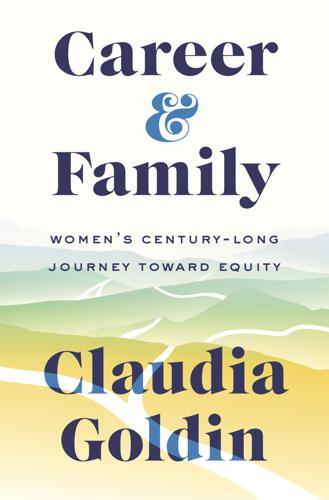
Career and Family: Women’s Century-Long Journey Toward Equity
by
Claudia Goldin
Published 11 Oct 2021
But their problem goes by many names: sex discrimination, gender bias, glass ceiling, mommy track, leaning out—take your pick. And the problem seems to have immediate solutions. We should coach women to be more competitive and train them to negotiate better. We need to expose managers’ implicit bias. The government should impose gender-parity mandates on corporate boards and enforce the equal-pay-for-equal-work doctrine. Women in the US and elsewhere are clamoring ever more loudly for such an answer. Their concerns are splattered across national headlines (and book jackets). Do they need more drive? Do they need to lean in? Why aren’t women able to advance up the corporate ladder at the speed of their male counterparts?
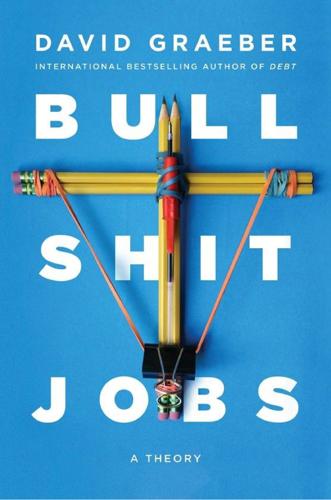
Bullshit Jobs: A Theory
by
David Graeber
Published 14 May 2018
One might argue that BDSM practice, from a submissive woman’s perspective, encodes the possibility of this transformation as part of the structure of the event and under her own ultimate control. 12. Article 23 of the UN Universal Declaration of Human Rights, for example, states: “Everyone has the right to work, to free choice of employment, to just and favorable conditions of work and to protection against unemployment.” It also guarantees equal pay for equal work, compensation adequate to support a family, and the right to form labor unions. It says nothing about the purpose of the work itself. 13. The office was also “rife with bullying and deeply, deeply strange office politics”—the usual sadomasochistic dynamics one can expect to ensue in hierarchical environments, as usual, too, exacerbated by the shared guilty knowledge that there’s nothing really at stake. 14.
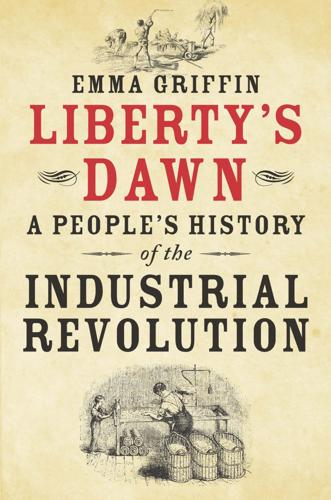
Liberty's Dawn: A People's History of the Industrial Revolution
by
Emma Griffin
Published 10 Jun 2013
For women in industrial employment, see Carol E. Morgan, Women Workers and Gender Identities, 1835–1913: the Cotton and Metal Industries in England (London, 2002); idem, ‘Women, work and consciousness in the mid nineteenth-century English cotton industry’, Social History, 17 (1992), pp. 23–41; Janet Greenlees, ‘Equal pay for equal work?: a new look at gender and wages in the Lancashire cotton industry, 1790–1855’, in Margaret Walsh, ed., Working out Gender: Perspectives from Labour History (Aldershot, 1999), pp. 167–90; Robert Gray, ‘Factory legislation and the gendering of jobs in the north of England, 1830–1860’, Gender & History, 5 (1993), pp. 56–80. 21.

Doing Harm: The Truth About How Bad Medicine and Lazy Science Leave Women Dismissed, Misdiagnosed, and Sick
by
Maya Dusenbery
Published 6 Mar 2018
Though these women had received their medical education during a time when women made up nearly half of all medical students, their experiences were disturbingly similar to those of their pioneering foremothers: 70 percent of the women perceived gender bias, and two-thirds said they had experienced it firsthand. A third reported that they’d been sexually harassed. We should all care about the sexism that women continue to face within medicine for its own sake, of course. Working women in every profession deserve equal pay for equal work, freedom from sexual harassment and discrimination, and supportive workplaces that allow them to reach their full potential. We would also do well to support gender equality within medicine simply because women tend to be better doctors—to all patients. A 2013 Canadian study of 870 doctors treating patients for diabetes found that the women outperformed the men on every standard of quality care.

Capitalism in America: A History
by
Adrian Wooldridge
and
Alan Greenspan
Published 15 Oct 2018
The National Labor Relations Act, or Wagner Act, of 1935 placed tight limits on what firms could do against unions, but few limits on what unions could do against firms: unions had the right to organize while employers had an obligation to deal with “duly recognized union representatives.” The act also imposed a policy of “equal pay for equal work,” which made it all but impossible for companies to pay people according to their seniority, let alone their individual merit.49 The unions immediately capitalized on the combination of constitutional power and economic recovery to press home their advantage, mounting successful membership drives and shifting the locus of popular protest from hunger marches to trade union halls.

Empire
by
Michael Hardt
and
Antonio Negri
Published 9 Mar 2000
The social wage extends well beyond the family to the entire multitude, even those who are unemployed, because the entire multitude produces, and its production is necessary from the standpoint oftotal social capital. In the passage to postmodernity and biopolitical production, labor power has become increasingly collective and social. It is not even possible to support the old slogan ‘‘equal pay for equal work’’ when labor cannot be individualized and measured. The demand for a social wage extends to the entire population the demand that all activity necessary for the production ofcapital be recognized with an equal compensation such that a social wage is really a guaranteed income. Once citizenship is ex- tended to all, we could call this guaranteed income a citizenship income, due each as a member ofsociety.
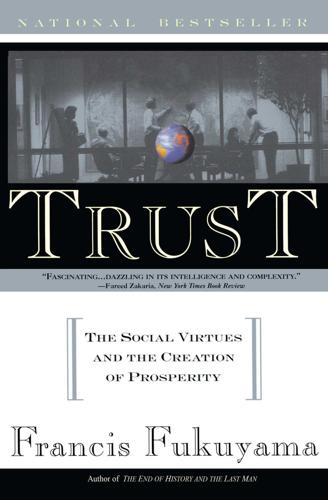
Trust: The Social Virtue and the Creation of Prosperity
by
Francis Fukuyama
Published 1 Jan 1995
All of this stands in sharp contrast to the United States, where it has always been possible, even at an advanced age, to start over again after failure. Workers are compensated in what would appear to be a totally irrational way from the standpoint of neoclassical economics.5 There is no such thing as a principle of equal pay for equal work; rather, compensation is broadly based on seniority or other factors unrelated to the worker’s performance, such as whether he has a large family to support.6 Japanese companies pay a relatively larger share of total compensation to their workers in the form of bonuses. Some bonuses are granted as a reward for individual effort, but more often they are paid to larger groups—say, a section within a company or the company as a whole—in return for its collective efforts.

A Generation of Sociopaths: How the Baby Boomers Betrayed America
by
Bruce Cannon Gibney
Published 7 Mar 2017
Economic inequality expanded greatly during Boomer tenure—helped along by bipartisan cuts to capital gains and estate taxes, and the strangulation of quality public schooling. Gaps, however, were not limited to those between rich and poor. Although women have been a significant part of the workforce for decades, they still do not receive equal pay for equal work. The Equal Rights Amendment would have provided a foundation for redress. ERA even had Republican champions in the White House through the 1970s, and nearly achieved ratification. The amendment’s momentum evaporated just as the Boomers were rising to power. While the ERA is dead, the imbalances it sought to eliminate live on.
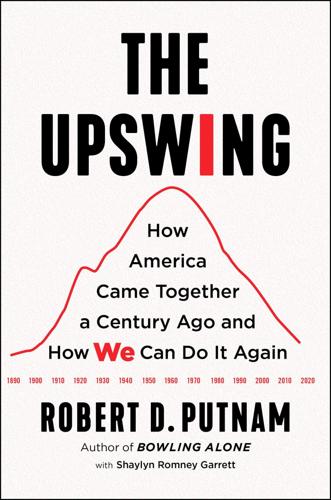
The Upswing: How America Came Together a Century Ago and How We Can Do It Again
by
Robert D. Putnam
Published 12 Oct 2020
Patterson, Grand Expectations: The United States, 1945–1974, The Oxford History of the United States, vol. 10 (New York: Oxford University Press, 1996), 33. 47 Blau and Winkler, The Economics of Women, Men, and Work, 30. 48 Emilie Stoltzfus, Citizen, Mother, Worker: Debating Public Responsibility for Child Care after the Second World War, Gender & American Culture (Chapel Hill: University of North Carolina Press, 2003). 49 However, working-class black women were much more supportive of “equal pay for equal work,” because they more often found themselves in the “heavier, dirty” jobs that were more “equal” to men’s. See Dorothy Sue Cobble, The Other Women’s Movement: Workplace Justice and Social Rights in Modern America, Politics and Society in Twentieth-Century America (Princeton: Princeton University Press, 2004), 98–101. 50 David M.
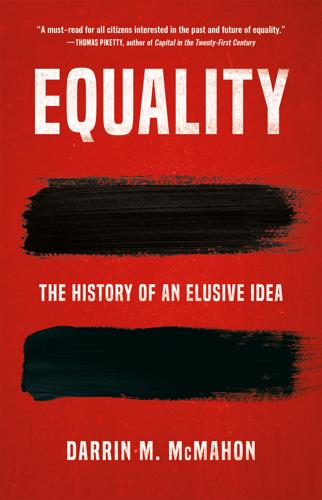
Equality
by
Darrin M. McMahon
Published 14 Nov 2023
They demanded sovereignty over their bodies, pressing for sexual liberation through birth control, the right to abortion, and a heightened awareness of male violence against women and the ubiquity of rape. They fought for legislation banning bias in hiring and in the workplace, and for equal offerings and opportunities at schools (Title IX). They lobbied for equal pay for equal work, equal credit, and, through the ill-fated Equal Rights Amendment to the Constitution—twice broached, but unratified to this day by the requisite three-quarters of all states—equal rights. And to pursue those ends collectively they came together, forming local associations for women’s liberation and new countrywide organizations, such as Friedan’s National Organization for Women (NOW) and the National Women’s Political Caucus (NWPC) that followed.

Human Diversity: The Biology of Gender, Race, and Class
by
Charles Murray
Published 28 Jan 2020
It may be hard for readers not old enough to remember for themselves how long—50 years now—the upper-middle-class milieu has been overwhelmingly feminist, so perhaps a few reminders are in order. First, consider the timeline of legal reforms: 1963: John Kennedy’s Presidential Commission on the Status of Women released its strongly pro-feminist report, and the Equal Pay Act of 1963 mandated equal pay for equal work. 1964: Title VII of the Civil Rights Act of 1964 forbade employer discrimination on the basis of sex. Griswold v. Connecticut invalidated legal restrictions on access to birth control. 1967: A presidential executive order extended affirmative action in employment and education to include women. 1968: Sexual harassment was added to federal antidiscrimination law as a basis for bringing actions against employers. 1972: Title IX of the Education Amendments mandated nondiscrimination in any school receiving government aid (effectively all of them) and included broad enforcement powers.

The Origins of Political Order: From Prehuman Times to the French Revolution
by
Francis Fukuyama
Published 11 Apr 2011
A great deal of contemporary politics revolves around demands for recognition, particularly on the part of groups that have historical reasons for believing their worth has not been adequately acknowledged: racial minorities, women, gays, indigenous peoples, and the like. While these demands may have an economic component, like equal pay for equal work, economic resources are often seen more as markers of dignity rather than ends in themselves.35 Today we label demands for recognition “identity politics.” This is a modern phenomenon that arises primarily in fluid, pluralistic societies where people are able to take on multiple identities.36 But even before the rise of the modern world, recognition was a crucial driver of collective behavior.

Cuba: An American History
by
Ada Ferrer
Published 6 Sep 2021
Four days later, the constitution was formally promulgated from the portico of the Capitol before “an immense crowd that filled the tall flight of steps and overflowed into the sidewalks, streets, balconies, and even the rooftops of surrounding buildings.”20 * * * THE 1940 CONSTITUTION, WITH 286 articles in 19 sections, was clearly a progressive charter. It enshrined in the fundamental law of the land a host of social rights pursued over decades of popular mobilization. Many of those rights pertained to labor. Article 61 established a national minimum wage; Article 62 mandated equal pay for equal work; Article 64 prohibited the long-held practice of paying workers in tokens or scrip. Articles 65–67 established workers’ social insurance, an eight-hour day, and paid vacation. Article 68, meanwhile, granted women paid maternity leave, and Articles 70–72 guaranteed the right to unionization and to strike.

The True and Only Heaven: Progress and Its Critics
by
Christopher Lasch
Published 16 Sep 1991
The debate about abortion illustrates the difference between the enlightened ethic of competitive achievement and the petty-bourgeois or working-class ethic of limits. "The values and beliefs of pro-choice [people] diametrically oppose those of pro-life people," Kristin Luker writes in her study of the politics of abortion in California. Pro-life activists resented feminist disparagement of housework and motherhood. They agreed that women ought to get equal pay for equal work in the marketplace, but they did not agree that unpaid work in the home was degrading and oppressive. What they found "disturbing [in] the whole abortion mentality," as one of them put it, "is the idea that family duties—rearing children, managing a home, loving and caring for a husband—are somehow degrading to women."

This Changes Everything: Capitalism vs. The Climate
by
Naomi Klein
Published 15 Sep 2014
The eradication of slums housing millions is complex far beyond integrating buses and lunch counters.”8 And though often forgotten, the more radical wing of the second-wave feminist movement also argued for fundamental challenges to the free market economic order. It wanted women not only to get equal pay for equal work in traditional jobs but to have their work in the home caring for children and the elderly recognized and compensated as a massive unacknowledged market subsidy—essentially a demand for wealth redistribution on a scale greater than the New Deal. But as we know, while these movements won huge battles against institutional discrimination, the victories that remained elusive were those that, in King’s words, could not be purchased “at bargain rates.”

The Narrow Corridor: States, Societies, and the Fate of Liberty
by
Daron Acemoglu
and
James A. Robinson
Published 23 Sep 2019
The Universal Declaration similarly asserts: Whereas disregard and contempt for human rights have resulted in barbarous acts which have outraged the conscience of mankind, and the advent of a world in which human beings shall enjoy freedom of speech and belief and freedom from fear and want has been proclaimed as the highest aspiration of the common people. Article 23 proceeds: Everyone has the right to work, to free choice of employment, to just and favorable conditions of work and to protection against unemployment. Everyone, without any discrimination, has the right to equal pay for equal work. Everyone who works has the right to just and favorable remuneration ensuring for himself and his family an existence worthy of human dignity, and supplemented, if necessary, by other means of social protection. Everyone has the right to form and to join trade unions for the protection of his interests.

The Radical Fund: How a Band of Visionaries and a Million Dollars Upended America
by
John Fabian Witt
Published 14 Oct 2025
A Republican appointee from the Hoover administration, Judge Chesnut ruled that Black schoolteacher Walter Mills had been “unconstitutionally discriminated against in the practice of his profession” by the county school board’s distinction between “white and colored teachers.” Declaring victory in a circular to its branches, the association called the win “a precedent” that would “break down the age-old tradition of paying Negroes less than other citizens.” It was “another step in our program to secure ‘equal pay for equal work.’ ” A year later, the U.S. Court of Appeals for the Fourth Circuit affirmed the reasoning of the Mills case in Alston v. School Board of Norfolk, upholding the claims of Black schoolteacher Melvin Alston and the Norfolk Teachers’ Association.41 Community involvement was both a reason to pursue the salary cases and a crucial factor in their success.

A People's History of the United States
by
Howard Zinn
Published 2 Jan 1977
It demanded: that property qualifications be abolished for members of juries. that Grand Jurors be chosen from the lower-class as well as from the upperclass, which dominated Grand Juries. that the police not interfere with peaceful meetings. that the sanitary inspection of buildings be enforced. that contract labor be abolished in public works. that there be equal pay for equal work for women. that the streetcars be owned by the municipal government. The Democrats nominated an iron manufacturer, Abram Hewitt, and the Republicans nominated Theodore Roosevelt, at a convention presided over by Elihu Root, a corporation lawyer, with the nominating speech given by Chauncey Depew, a railroad director.

Reaganland: America's Right Turn 1976-1980
by
Rick Perlstein
Published 17 Aug 2020
Conservatives refused it on principle. Eddie Moore explained that the International Women’s Year program was part of “a plan started back in 1972 in the United Nations to bring about the destruction of the American family and home as we know it.” The only resolutions both sides agreed to were for equal pay for equal work and better public education (once the resolution was amended to omit an endorsement for kindergarten in all public schools). Resolutions supporting affirmative action, gender equality in schools and the military, and international cooperation to promote world peace were shouted down. Another passed affirming that “the IWY extends our moral support to our allies and friends of the Free World.”

Europe: A History
by
Norman Davies
Published 1 Jan 1996
It was provided for the children of working parents who would otherwise abandon them on the streets during the daytime. It was called La Casa dei Bambini, ‘the Children’s House’. The founder of the school, Dr Maria Montessori (1870–1952), was a woman well in advance of her time. She was a feminist who advocated equal pay for equal work, a qualified doctor, and director of an institute for retarded infants. Secretly, she was also the mother of an illegitimate boy, Mario Montessori, who was later to run the Association Montessori Internationale in Amsterdam. The Montessori Method, published in 1910, preached the principles of child-centred education.